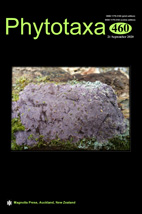Abstract
Geographic distributions of mushroom-forming fungi usually remain elusive because of the scarcity of occurrence data. However, the increasing number of environmental and ectomycorrhizal (EcM) root tip DNA sequences deposited in public repositories provides a unique opportunity to expand our knowledge about fungal geographic distributions, even at the intercontinental scale. Here, we present Cortinarius ochrolamellatus, a new EcM species likely associated to a number of oak species (Quercus spp.) in the Iberian Peninsula, Sardinia, Central Italy, France, and Norway. The morphological and phylogenetic study of the collections allowed us to include it within C. section Laeti. Furthermore, the combination of specimen-based and EcM root tip ITS data in the phylogenetic analysis revealed the presence of this species in the Hyrcanian Quercus forests of northern Iran. Hence, the present study adds further evidence for a biogeographic link between Europe and these Asian mountainous forests concerning fungi. The inferred Pleistocene temporal framework for the origin and diversification events in C. ochrolamellatus suggests that the distribution of this EcM species was likely driven by the distribution of its Quercus tree hosts during the complex Eurasian Quaternary history.

